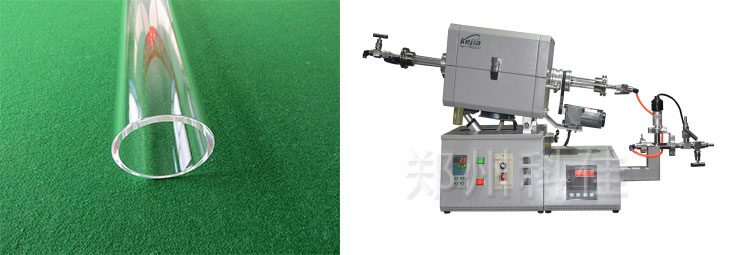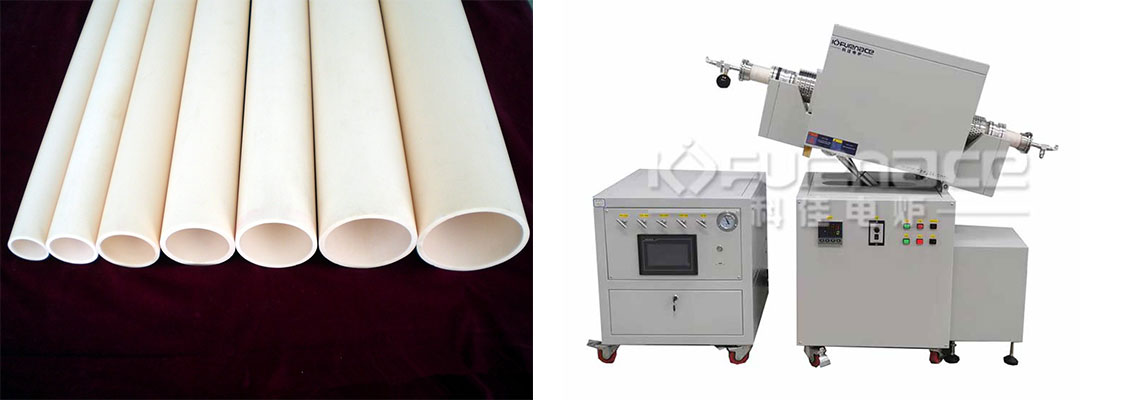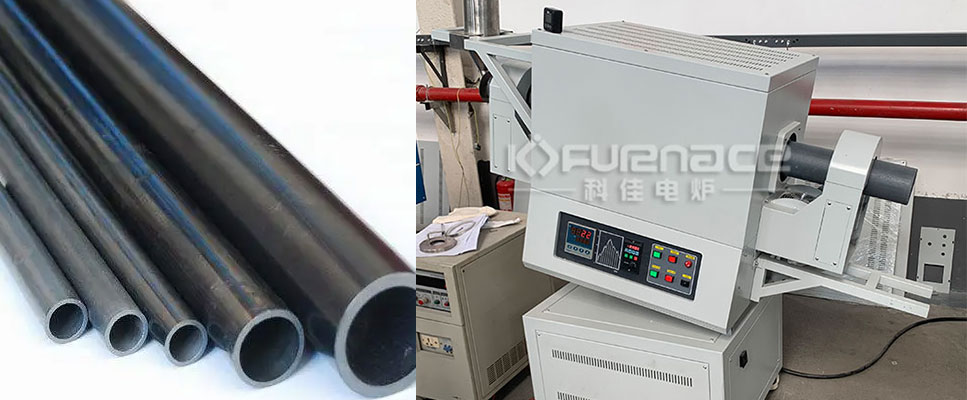The pipes of laboratory rotary furnaces are usually made of different materials according to experimental needs and working environment requirements. There are various materials for the pipes of laboratory rotary furnaces, and the following are some common types of materials:
① Quartz tube: also known as glass tube, but with a higher purity than ordinary glass to ensure stronger high-temperature resistance. Quartz tubes have excellent high-temperature resistance and chemical stability, making them suitable for use in high-temperature experiments and corrosive gas environments. The operating temperature is below 1200 ℃. Due to its excellent performance and lower price, it is also a commonly used material for furnace tubes.

A commonly used quartz tube laboratory rotary furnace
② High alumina furnace tube: also known as corundum tube or oxide furnace tube, this type of furnace tube is widely used in rotary furnaces, with characteristics such as good fire resistance, heat shock resistance, and corrosion resistance. Its main component is high-purity aluminum oxide, making it particularly suitable for areas such as the furnace throat, waist, and shaft. A temperature below 1400 ℃ is suitable for corrosive materials.

Corundum tube laboratory rotary furnace (click on image to view product details)
③ Stainless steel pipe: Stainless steel pipe has good high-temperature resistance and chemical stability, and is suitable for use in general experiments and conventional atmospheric environments. The usage temperature is generally below 1000 ℃, which is popular in university laboratories due to its relatively cheap price and not easy to break.

Stainless steel tube rotary tube furnace (click on the picture to view product details)
④ Silicon carbide tube: Silicon carbide tube has high strength, high hardness, good wear resistance, high temperature resistance, corrosion resistance, good thermal shock resistance, large thermal conductivity, and good oxidation resistance. The operating temperature is generally below 1400 ℃.

Silicon carbide tube laboratory rotary tube furnace (click on the image to view product details)
In addition to the common materials mentioned above, the pipes of laboratory rotary furnaces may also use other special materials to meet different experimental needs and working conditions. When selecting furnace tube materials, factors such as high temperature resistance, corrosion resistance, mechanical strength, and service life need to be considered. At the same time, the installation and maintenance of furnace tubes are also important links to ensure the normal operation of the laboratory rotary furnace. It is recommended to consult professionals before purchasing furnace tubes to understand which furnace tube material is more suitable for the materials being heat treated.Click to learn more Laboratory rotary furnace! Or click on online customer service to learn more about product information!